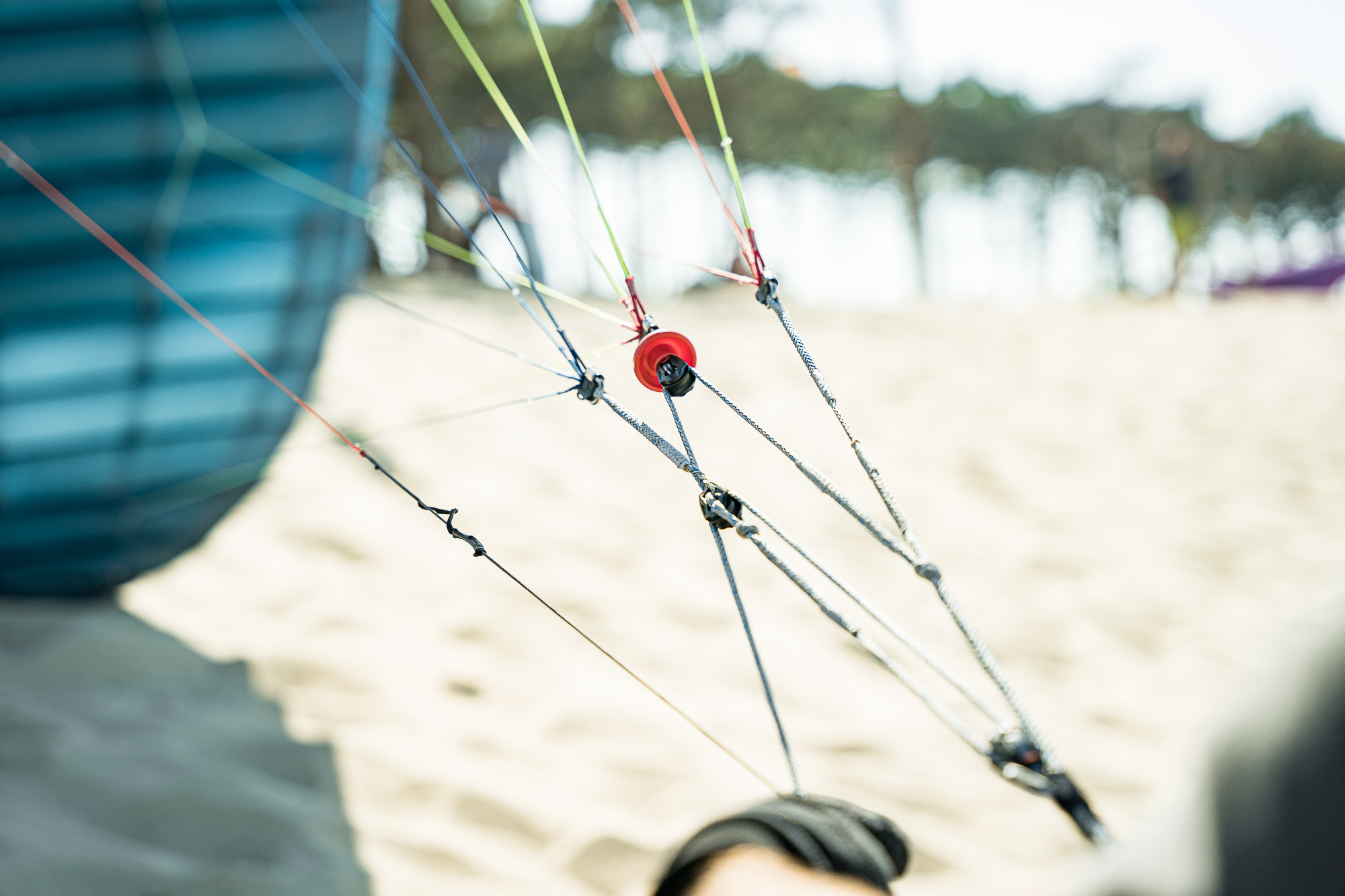Parakite is revolutionizing paragliding control with a brand-new brake system.
On this page, discover how the Moustache wing acts directly on the wing’s angle of attack, transforming your entire flying experience.
An exclusive, educational overview to better understand Parakite piloting.
A new way of flying
Parakite is an emerging discipline in the world of paragliding. It introduces a whole new approach to control, through an innovative system that acts directly on the wing’s angle of attack.
This technical breakthrough delivers higher speeds, exceptional 3D maneuverability, and dynamic control in all phases of flight.
The result: a faster, closer-to-the-ground flying experience, opening a new dimension in low-level soaring
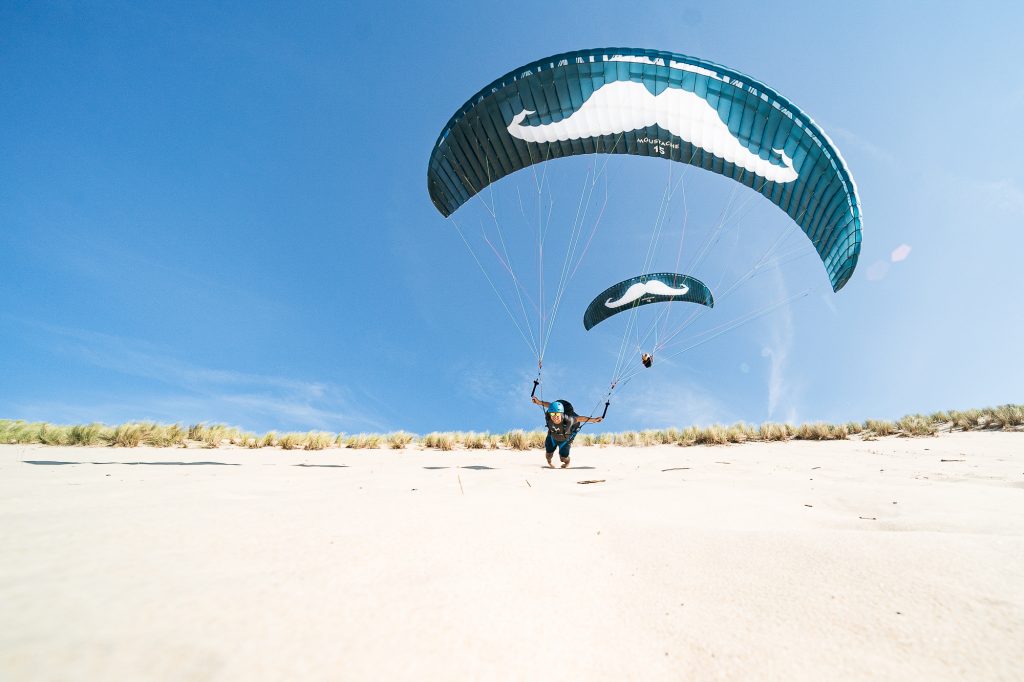
Unlike traditional paragliding, where the brakes mainly pull on the trailing edge, Parakite uses a unique internal pulley and redirection system, known as “moufflage”.
This mechanism efficiently distributes tension across several risers — mainly the B and C risers — to allow precise control of the wing’s incidence.
These points of action are represented by the blue dots in the diagram.
The secret behind the Moustache wing
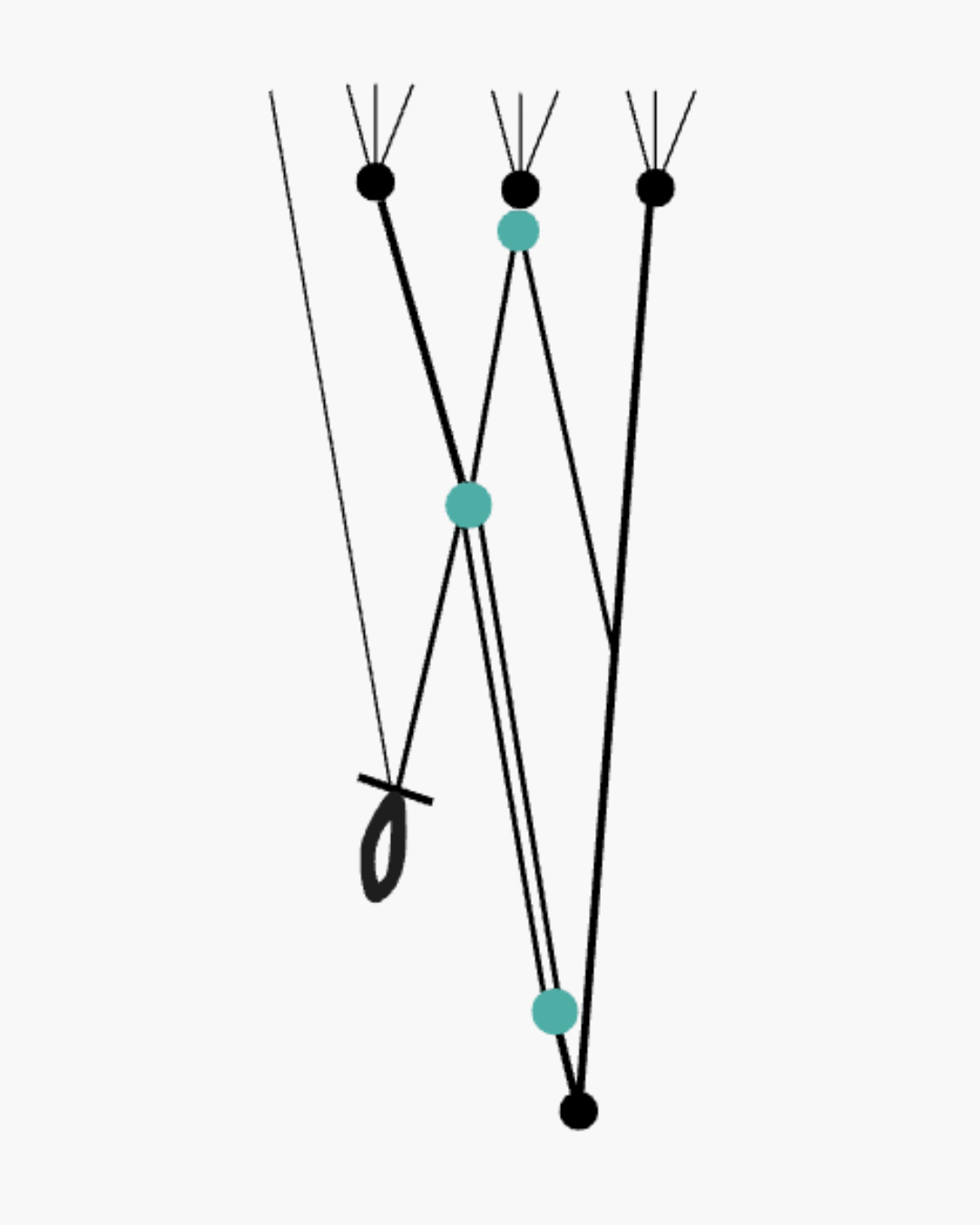
When the brakes are pulled:
• The entire wing pitches upward
→ Increasing the angle of attack, placing the wing in a different aerodynamic regime.
When hands are raised:
• The angle of attack decreases
→ The wing dives forward and accelerates, while remaining stable thanks to its reflex profile — specially designed to resist collapses even in dynamic, fast flight.
Le systeme de pilotage d'un parakite
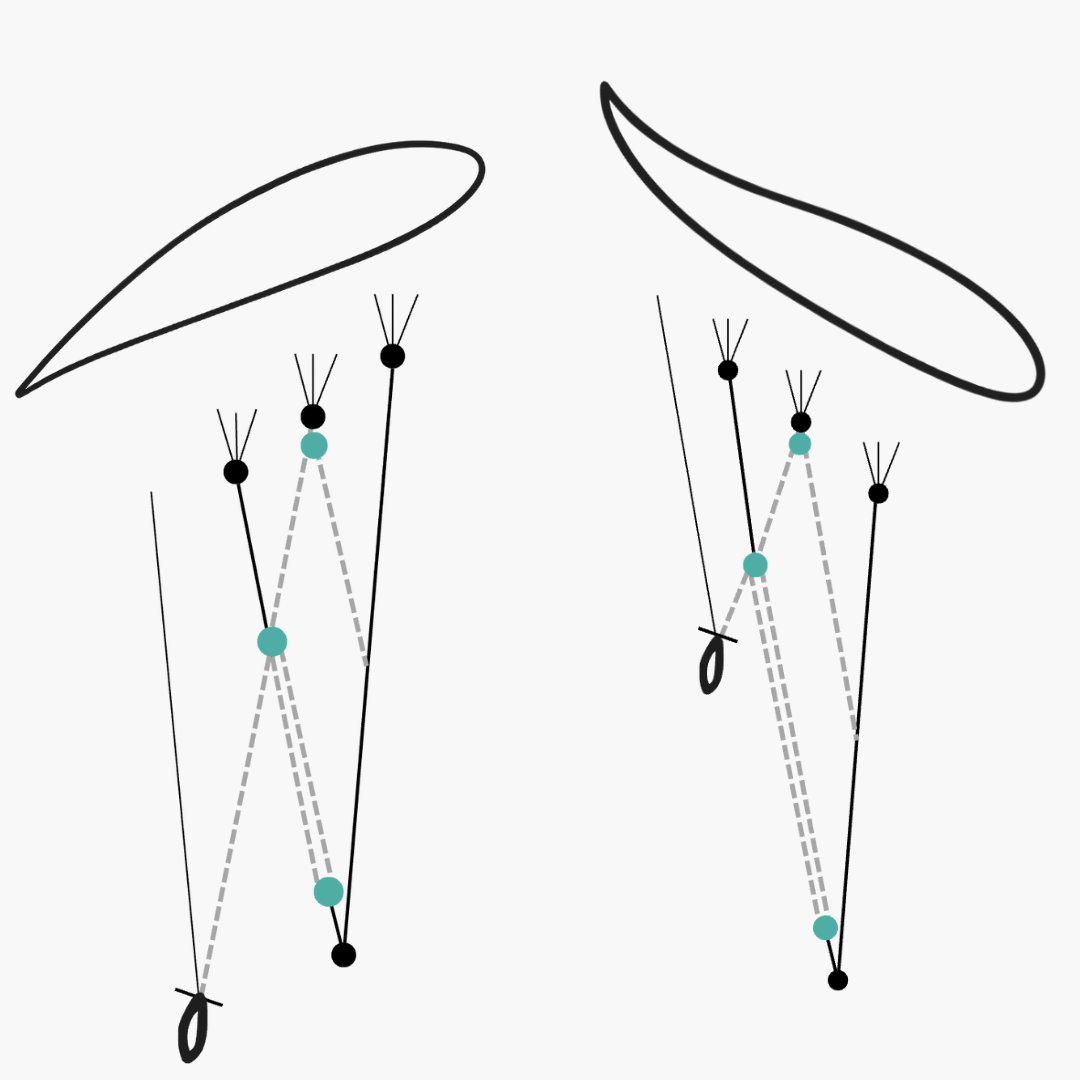
• Direct control over angle of attack, not just drag
• Precise pitch control, with immediate brake response
• Instant reactivity without profile deformation
• Exceptional maneuverability, perfect for proximity flying
• Stable high-speed behavior, thanks to the reflex profile effect
The control system in 5 key points
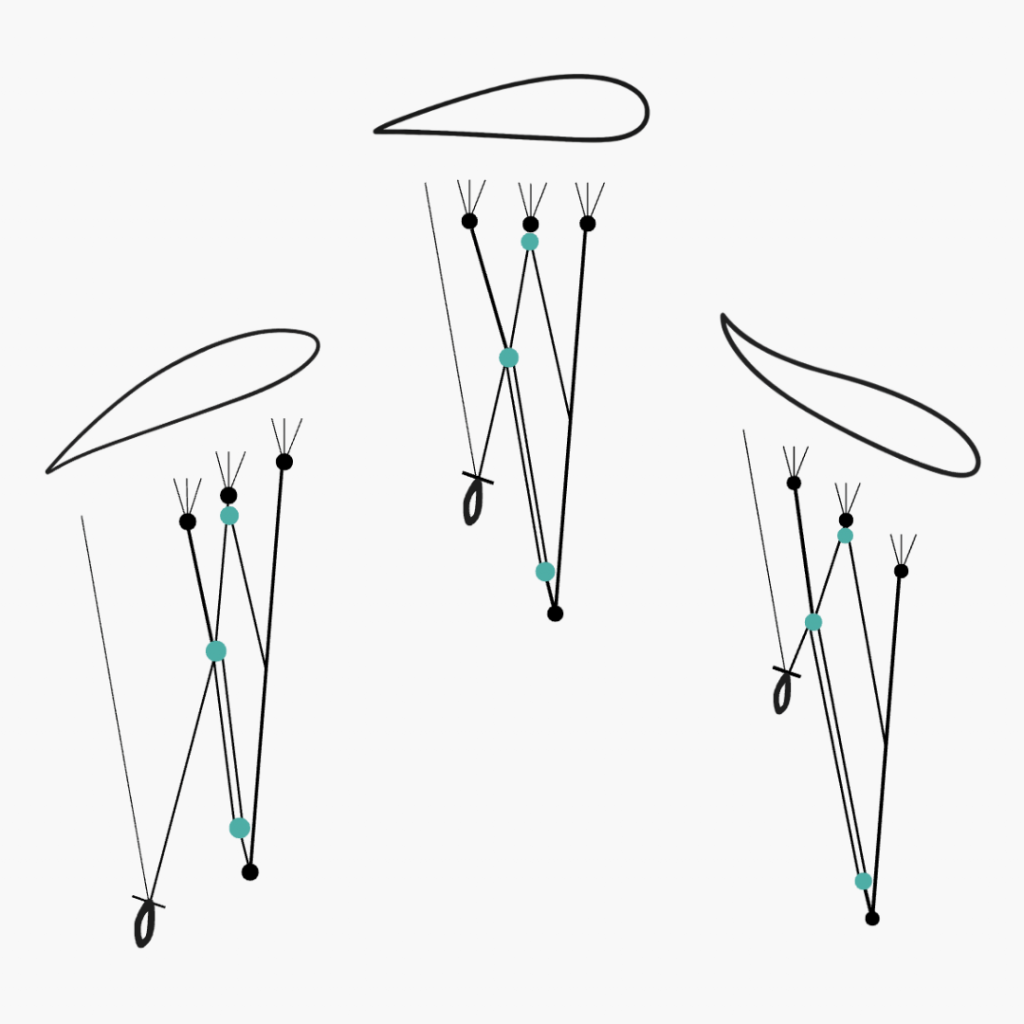
Parakite opens new perspectives in paragliding by offering a more direct, faster, and lower flight experience.
Like any demanding discipline, it requires a structured approach, clear reference points, and progressive training to ensure both pleasure and safety.
This is why a specific methodology is currently being developed in France — a process I actively contribute to.
👉 A dedicated course on the Dune du Pilat is offered to help you discover and master this new way of flying.
Why it matters
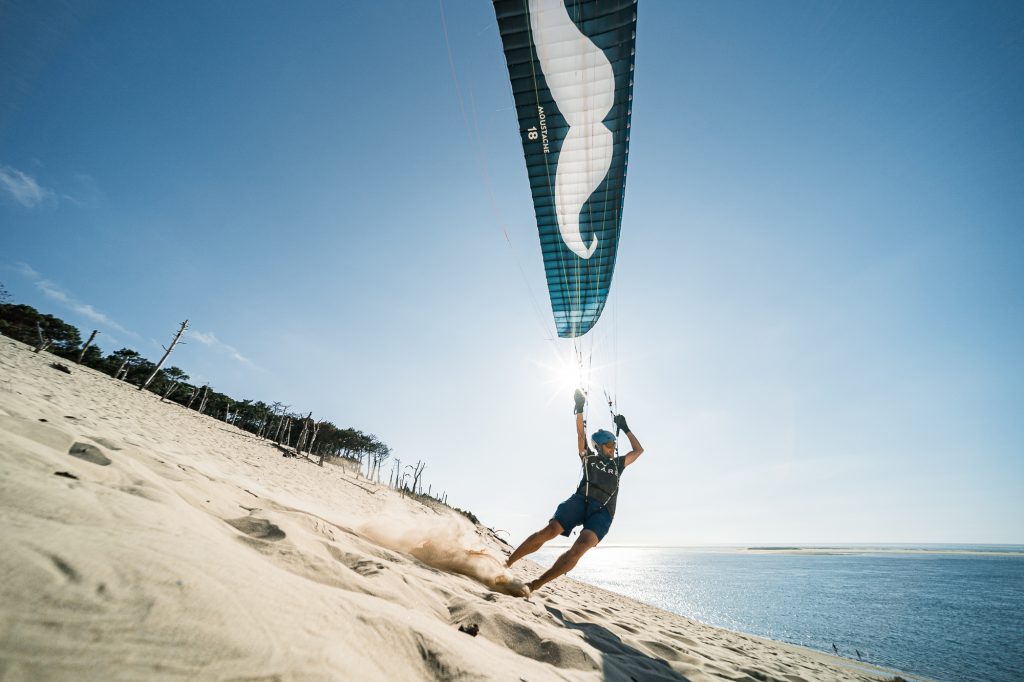
Instagram Facebook
